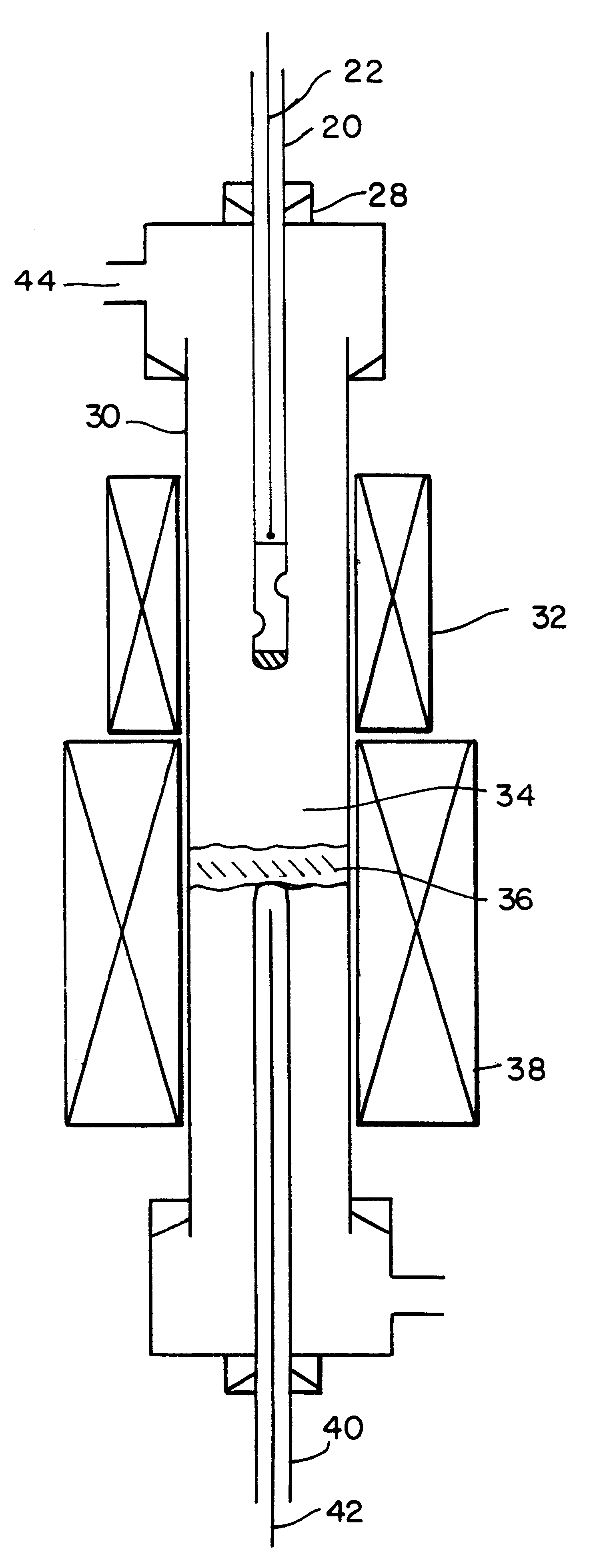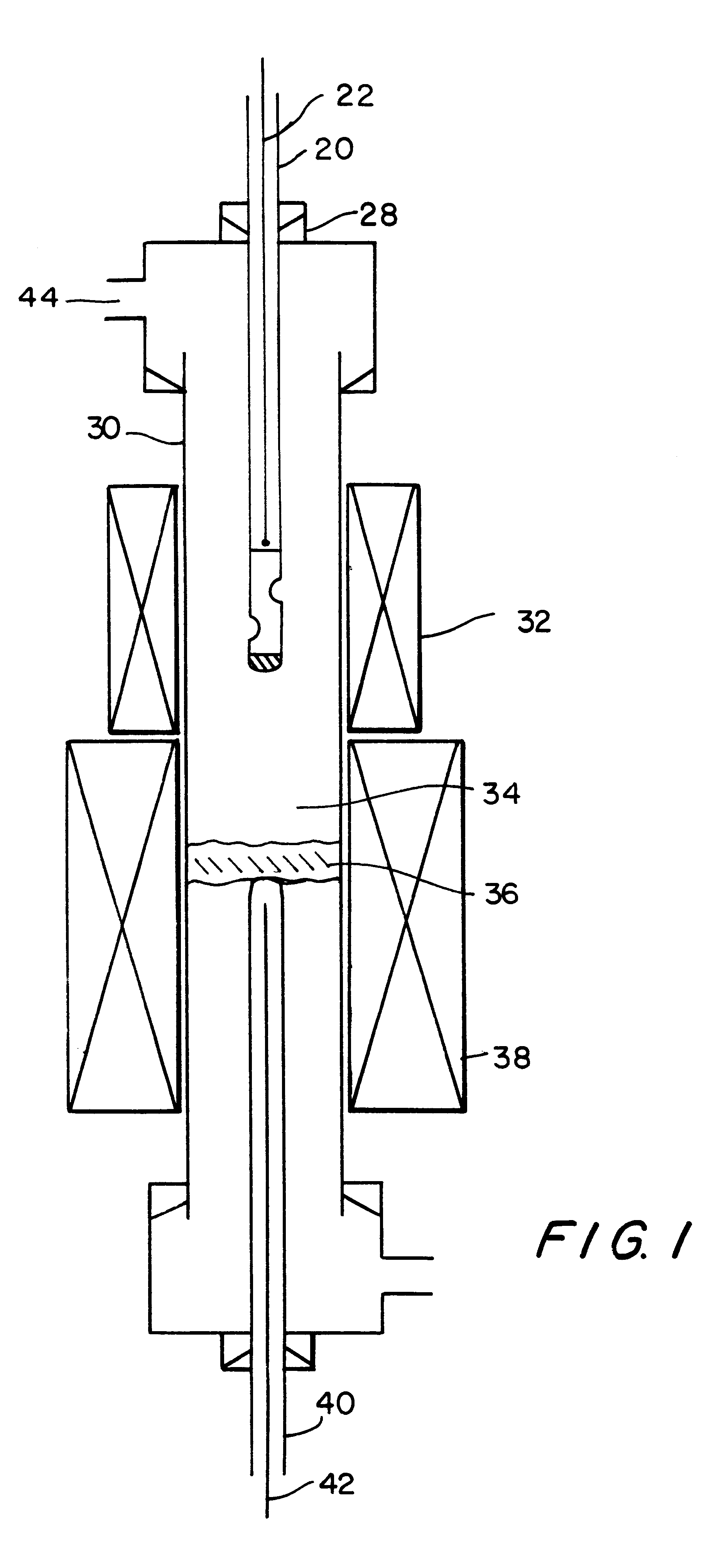Process for producing single wall nanotubes using unsupported metal catalysts
- Summary
- Abstract
- Description
- Claims
- Application Information
AI Technical Summary
Benefits of technology
Problems solved by technology
Method used
Image
Examples
examples 5 and 6
show many areas of SWNT along with MWNT and other carbon structures. Mo particles ranged from <1-10 nm. In Example 4, mainly MWNT were formed along with other structures of carbon. Mo particles ranged from .about.1-50 nm. Presumably, the particles generated in Examples 5 and 6 were the right size to promote SWNT growth over the other forms possible. In Example 4, particle sizes favored growth of MWNT and other forms.
example 1
In a direct injection process, the catalyst compartment was loaded with .about.40 mg Molybdenum hexacarbonyl [Mo(CO).sub.6 ] which has been ground to .about.-100 mesh. The reactor was heated to 900.degree. C. under an argon flow. Argon was then replaced with CO at atmospheric pressure at a flow of .about.0.8 SLM and the catalyst was injected.
The flow of Co was continued for 30 min. at 900.degree. C., after which it was replaced by argon, and the reactor furnace turned off. After cooling to ambient temperature, the entire contents of the reactor including the quartz wool plug which had been tared prior to the run, was emptied into a tared plastic bag. The quartz wool plug was blackened, but the yield of carbon growth (wgt C / wgt catalyst) was <1.
A specimen for Transmission Electron Microscopy (TEM) was prepared by shaking the quartz wool plug in ethanol in a glass vial and ultrasounding the ethanol for .about.2 min. This procedure dispersed the black particles from the quartz wool. A ...
example 2
The procedure of Ex. 1 was used to produce a mixture of Mo particles and carbon structures including both MWNT and SWNT. Catalyst charge [Mo(CO).sub.6 ] was .about.8 mg. SWNT yield was <50% of all nanotubes produced.
PUM
 Login to View More
Login to View More Abstract
Description
Claims
Application Information
 Login to View More
Login to View More - R&D
- Intellectual Property
- Life Sciences
- Materials
- Tech Scout
- Unparalleled Data Quality
- Higher Quality Content
- 60% Fewer Hallucinations
Browse by: Latest US Patents, China's latest patents, Technical Efficacy Thesaurus, Application Domain, Technology Topic, Popular Technical Reports.
© 2025 PatSnap. All rights reserved.Legal|Privacy policy|Modern Slavery Act Transparency Statement|Sitemap|About US| Contact US: help@patsnap.com



